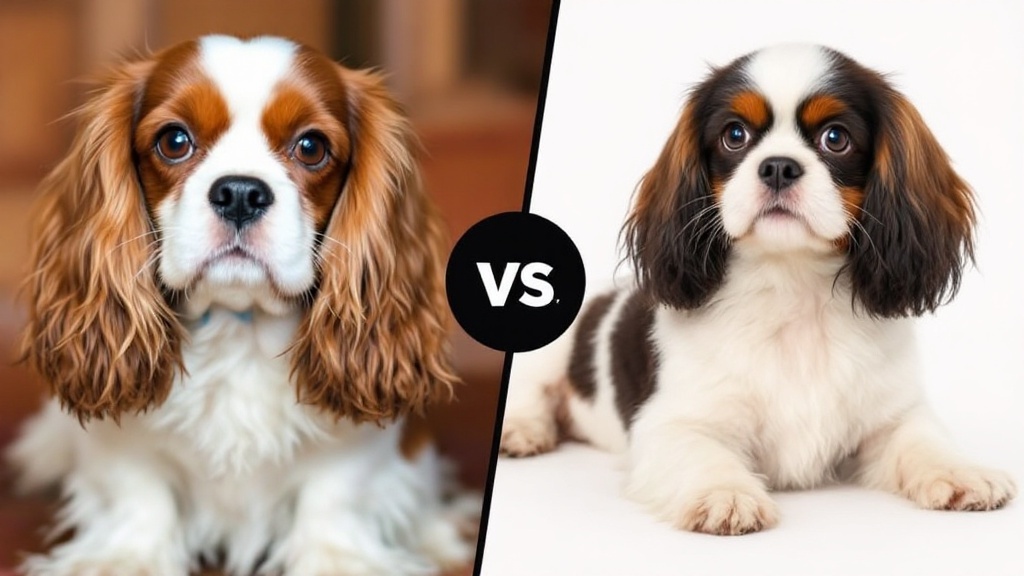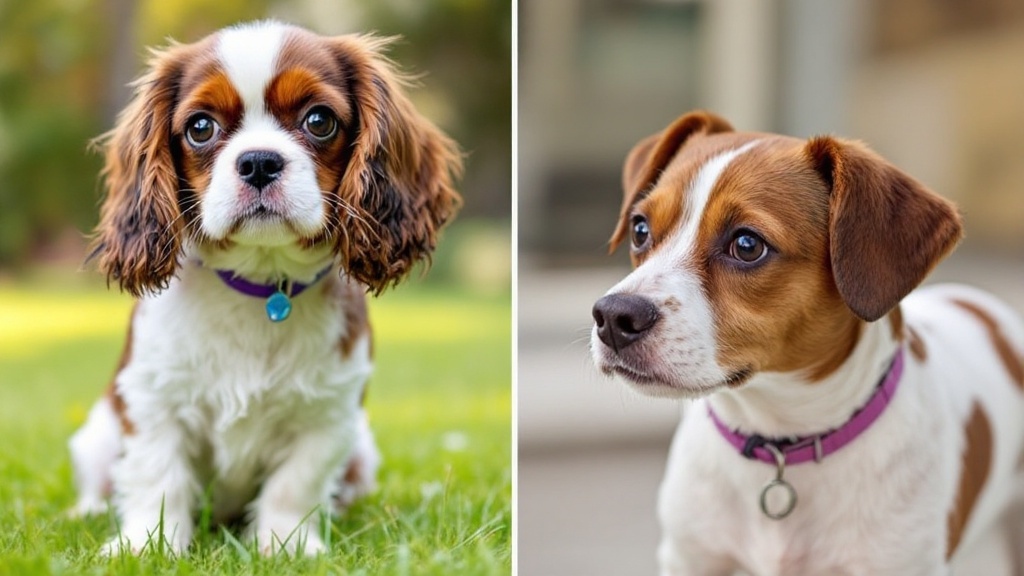Choosing between a Cavalier King Charles Spaniel and a Havanese means getting a feel for how they differ in size, personality, and what kind of care they need. The Cavalier is gentle and calm, while the Havanese is more playful and alert.
Both breeds make great pets, but it’s worth thinking about which one really matches your lifestyle.

These two dogs look pretty different and need different grooming routines. Cavaliers have a silky coat that needs regular brushing.
Havanese have a longer, curly coat that can be a bit more work. Knowing these differences helps you get ready for their daily care.
If you want a dog that gets along with kids or other pets, temperament matters. Cavaliers usually blend right in, and Havanese can be friendly but might need more socializing.
Key Takeaways
- The Cavalier is calm, and the Havanese is more energetic.
- Grooming needs differ due to their coat types.
- Both breeds can fit well in families but vary in social behavior.
Breed Origins and History
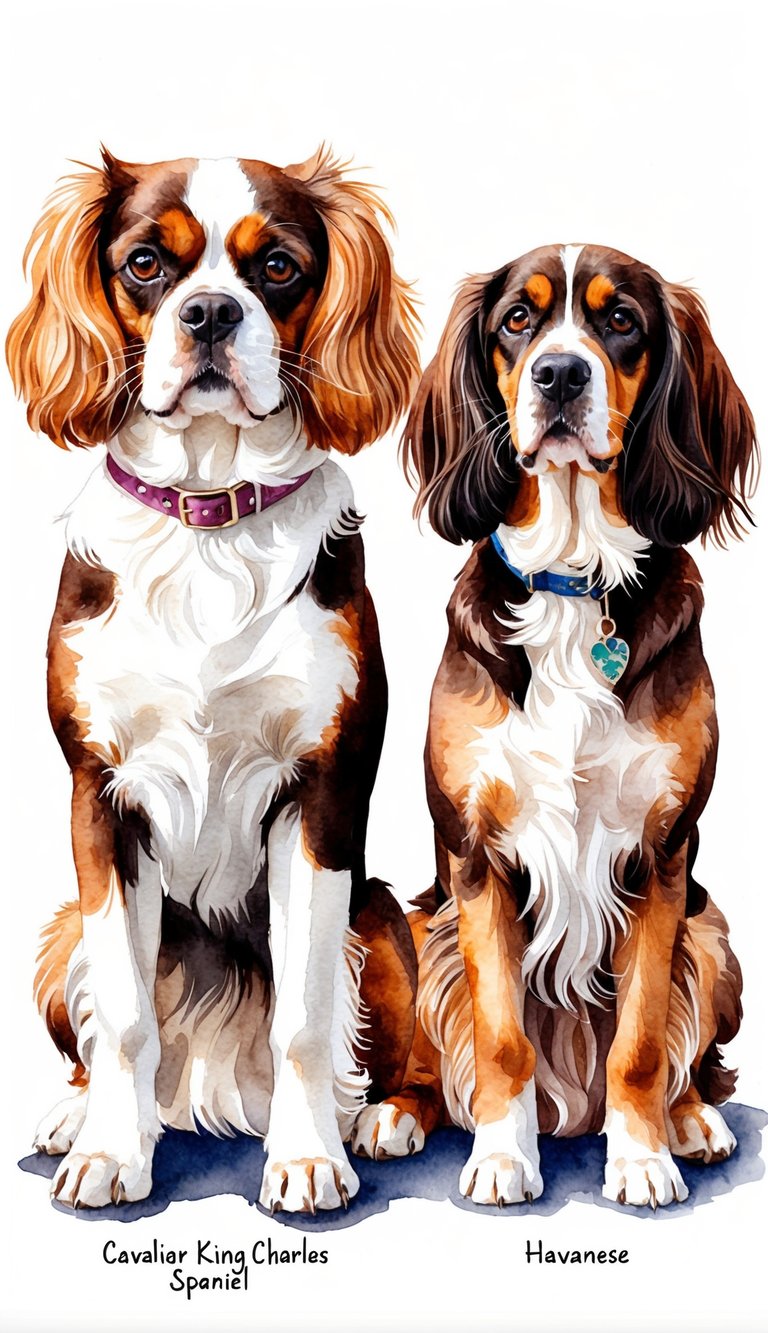
Both breeds have roots in Europe and were bred as companion dogs. But their backgrounds are pretty different when you look closer.
Cavalier King Charles Spaniel Background
The Cavalier King Charles Spaniel comes from the United Kingdom. This breed descends from small spaniels that were popular in the 16th and 17th centuries.
English royalty, especially King Charles II, adored them. He was rarely seen without one.
Breeders focused on making these dogs gentle and affectionate. Crossbreeding with other spaniels over the years gave us the modern Cavalier.
The breed stands out with its long ears and soulful eyes.
Havanese Heritage
The Havanese traces its roots to Cuba and is part of the Bichon family, like the Maltese and Bichon Frise. Spanish settlers brought small companion dogs to the Caribbean in the 1500s.
Cuban aristocrats loved the Havanese, keeping them as pampered pets instead of hunters or workers. Their easygoing and friendly nature made them perfect lap dogs.
The name comes straight from Havana, the capital city.
Development of the Breeds
Both breeds were shaped by selective breeding for companionship, but their paths split early on. The Cavalier King Charles Spaniel kept some of its spaniel roots but got smaller and even more people-oriented.
The Havanese was bred almost purely as a companion, keeping its soft, curly coat like its Bichon cousins. While the Cavalier’s history is all about the UK, the Havanese mixes European and Caribbean influences, shaped by life on the islands.
| Breed | Origin | Historical Role | Related Breeds |
|---|---|---|---|
| Cavalier King Charles | United Kingdom | Royal Companion | King Charles Spaniel |
| Havanese | Cuba | Aristocratic Pet | Bichon Frise, Maltese |
Physical Characteristics Compared
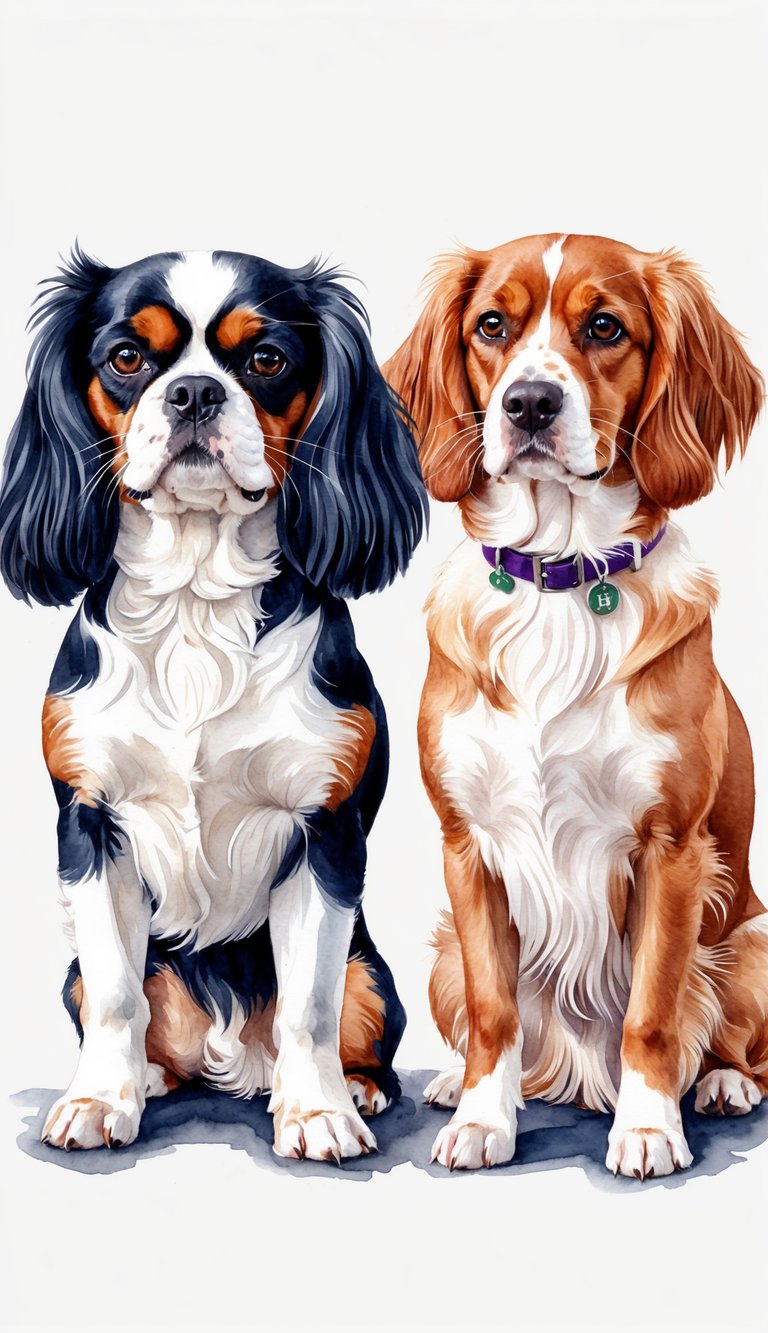
You’ll spot clear differences in size, coat, and face between these two breeds. These details can really help you figure out which one fits your taste.
Size and Build
The Cavalier King Charles Spaniel is small, but it’s usually bigger than the Havanese. Cavaliers stand about 30 to 33 cm tall and weigh 5.9 to 8.2 kg.
They have a sturdy, slightly longer body. Havanese are smaller, standing around 23 to 27 cm tall and weighing 3.6 to 7.3 kg.
Their build is more compact and square. If you want a more portable pup, the Havanese is easier to carry around.
Coat Type and Coloring
Cavaliers have a medium-length, silky coat that lies flat and may have a little wave. There are four main color patterns: Blenheim (red and white), tricolor (black, white, and tan), ruby (solid red), and black & tan.
The Havanese has a long, wavy, or curly coat that can get pretty fluffy. Sometimes it even covers their eyes if you don’t trim it.
They come in a ton of colors—white, black, cream, chocolate, silver, and mixes. The Havanese coat needs more regular grooming because of its length and curls.
Facial Features
Cavaliers have large, round, dark eyes that give them a sweet, expressive look. Their ears are long and feathered, with lots of silky hair.
They have a moderately short muzzle and a slightly rounded forehead. The Havanese has a smaller face and a longer muzzle.
Their eyes are medium-sized and dark, but not as round as the Cavalier’s. Their ears are drop-shaped and covered in long hair, but they’re not as feathery.
The Cavalier’s face looks gentle and soft, while the Havanese often looks playful and alert.
Temperament and Personality Traits
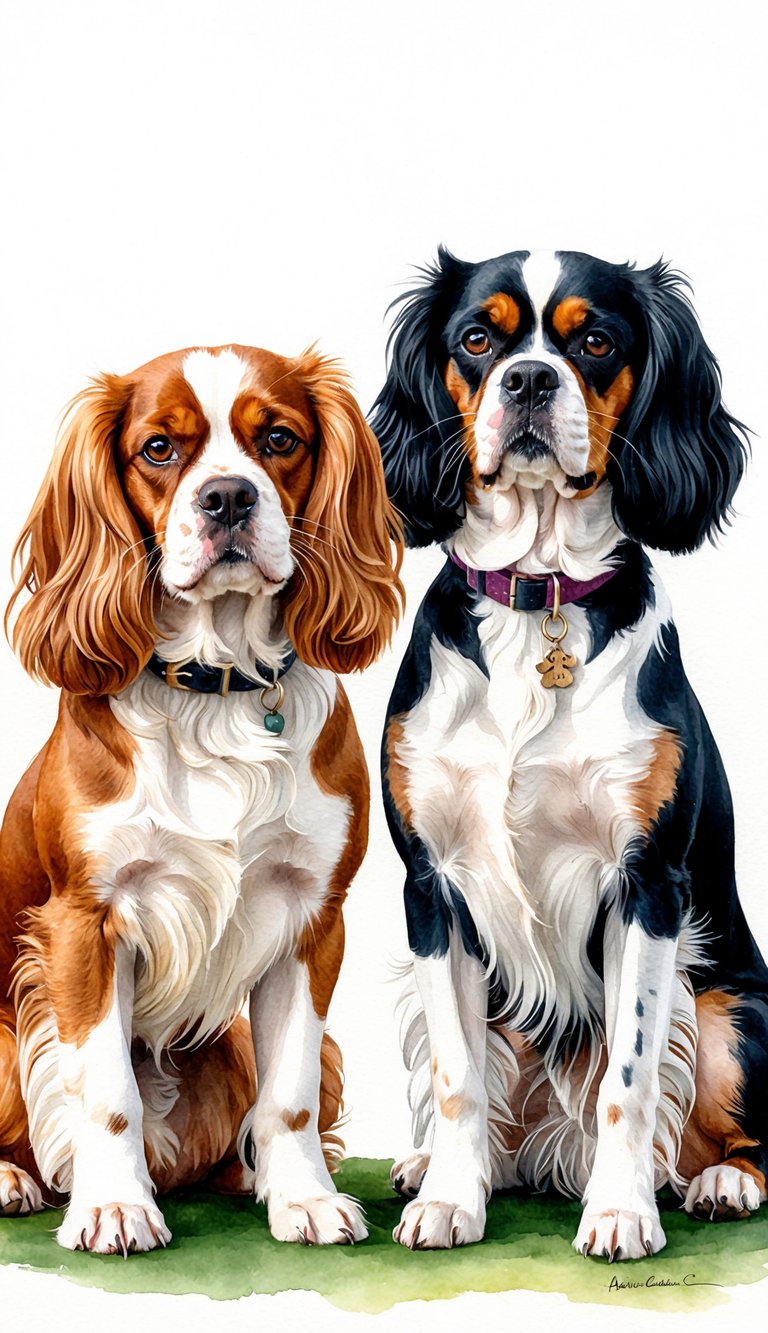
Both breeds are friendly, but their personalities aren’t quite the same. Getting to know these traits can help you pick the right dog for your home.
Typical Behaviors
Cavaliers are calm and affectionate. They love to cuddle and are gentle with pretty much everyone.
They enjoy quiet time but are happy to play too. Havanese are more lively and curious.
They like to explore and interact with everything. You might notice they’re playful, sometimes a bit stubborn, but they do want to please you—especially if you’re patient with training.
Both breeds crave attention. Cavaliers are usually more laid-back, while Havanese can be a bit more vocal and alert you when something’s up.
Suitability for Families
If you have young kids, the Cavalier is a safe bet. It’s patient and tolerant, and makes a great companion for gentle play.
Their calm nature works well with older adults too. The Havanese can be an awesome family dog, especially if your crew is active.
They love games and outdoor fun, but they need early socialization to avoid shyness. This breed bonds tightly with its people and does well in busy homes.
Whatever breed you choose, teach kids to handle dogs gently. It keeps everyone happy.
Interaction With Other Pets
Cavaliers usually get along with other dogs and pets. They’re not aggressive and tend to be pretty sociable.
The Havanese can be friendly with other pets too, but sometimes they act a bit protective. Early introductions and slow meetings help.
If you already have pets, both breeds usually adapt well if you take things slow.
Energy Levels
Cavalier King Charles Spaniels have moderate energy. They enjoy daily walks and some play, but they don’t need a ton of exercise.
They’re content to chill indoors. Havanese have higher energy.
You’ll need to set aside time for play and more frequent walks. They love activities that challenge their minds and bodies.
Both breeds need mental stimulation, but the Havanese needs a bit more to stay out of trouble.
Grooming and Maintenance Needs
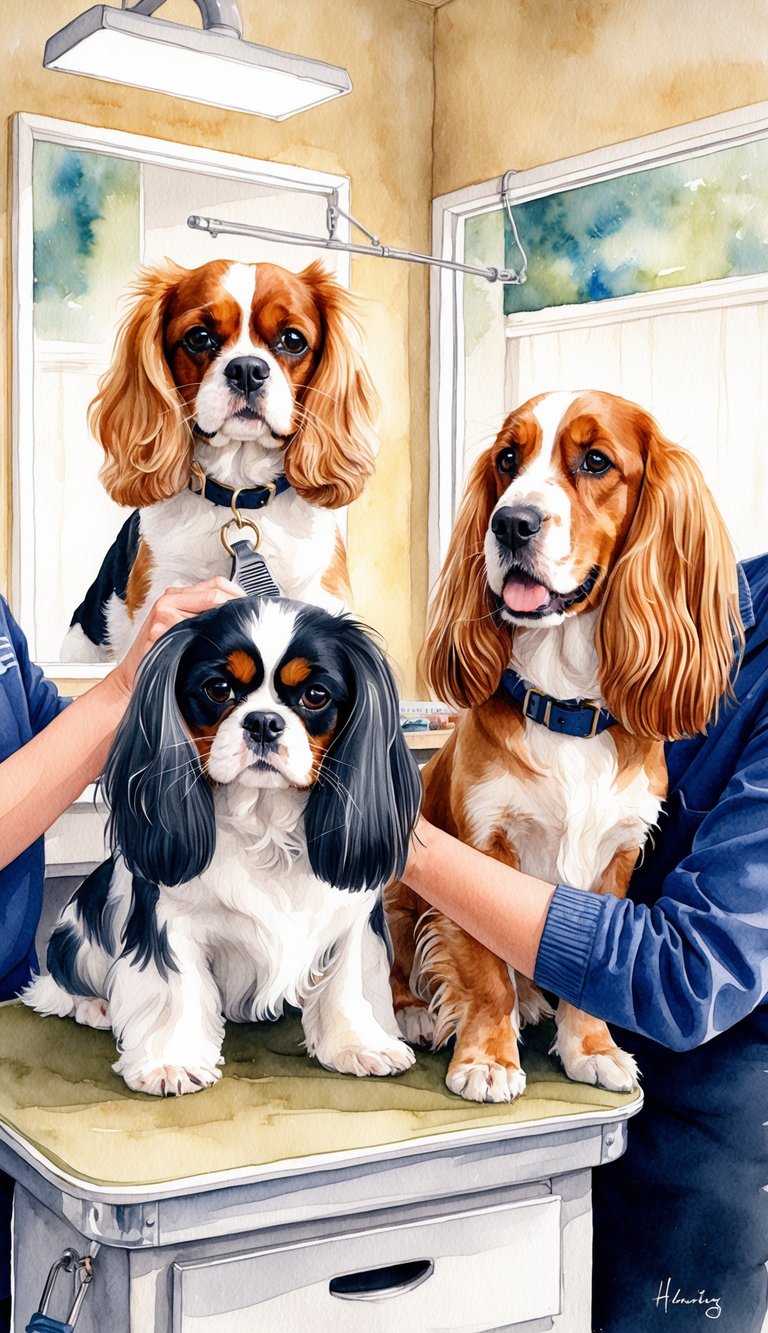
Both the Cavalier King Charles Spaniel and the Havanese need regular grooming to stay healthy. Their coats need brushing to prevent mats and shedding, and you can’t ignore their nails, ears, and teeth.
Brushing and Shedding
Your Cavalier King Charles Spaniel has a silky coat that sheds moderately all year. You’ll want to brush it at least three times a week to keep mats and loose hair under control.
A slicker brush or comb does the trick for their fur. The Havanese has a long, wavy coat that barely sheds, so it’s more hypoallergenic.
You should brush your Havanese daily to prevent tangles and mats, especially around the ears and legs. A pin brush or wide-tooth comb works best.
Brushing regularly helps cut down on allergens, especially with the Havanese.
Bathing and Coat Care
Bathe your Cavalier King Charles Spaniel every 4 to 6 weeks, depending on how dirty they get. Use a gentle dog shampoo to avoid drying out their skin.
Make sure to dry them completely to avoid skin problems. The Havanese also needs a bath every 3 to 6 weeks.
Their coat can trap dirt and moisture, so dry them well to prevent odors or infections. Don’t overdo the baths or you’ll strip their natural oils.
Both breeds need regular trimming, especially around the paw pads and ears. Many owners go for professional grooming now and then to keep things tidy.
Nail, Ear, and Dental Maintenance
Check nails every couple of weeks and trim as needed. Overgrown nails hurt and can mess with their walk.
Cavaliers sometimes wear their nails down naturally if they walk on hard surfaces, but Havanese usually need more nail care. Clean their ears weekly with a vet-approved solution, since floppy ears can get infected.
Watch for redness or weird smells. For dental care, brush their teeth several times a week or give them dental chews.
Both breeds do better with a regular dental routine.
Health and Genetic Considerations
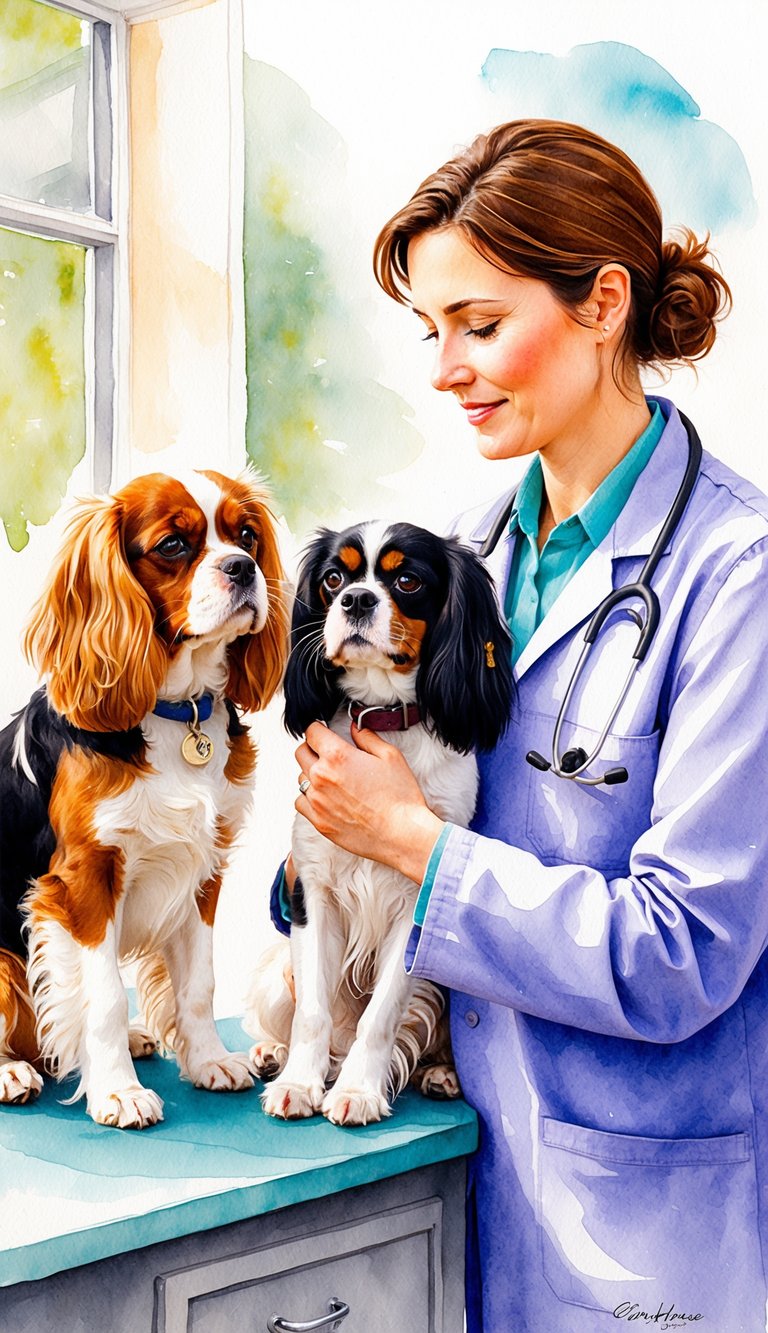
You should know about common health issues, how long they live, and genetic testing before picking between a Cavalier King Charles Spaniel and a Havanese.
Breed-Specific Health Issues
Cavalier King Charles Spaniels often deal with heart problems, especially mitral valve disease. They can also get syringomyelia, which affects the brain and spine and can be pretty painful.
Eye conditions like cataracts are also common. Havanese can have hip dysplasia and luxating patellas, which are joint issues.
They might also develop cataracts or hereditary eye diseases, but they’re less likely to have serious heart problems compared to Cavaliers. Both breeds can get ear infections because of their floppy ears.
Regular vet visits help you catch problems early.
Lifespan Expectations
Cavalier King Charles Spaniels usually live about 9 to 14 years. Heart and neurological issues can shorten their lives if not managed.
Havanese often live longer, around 14 to 16 years. With fewer serious genetic problems, they tend to have a longer, healthier run.
It’s worth thinking about these numbers when planning for the years ahead.
DNA Test and Screening
Doing DNA tests before you get your dog is important. For Cavaliers, it helps to check for genes linked to mitral valve disease and syringomyelia.
Havanese DNA tests usually focus on hip quality and hereditary eye diseases. These genetic checks lower the risk of passing on serious health problems.
Ask breeders for health clearances based on these results. Early screenings let you plan preventive care tailored to your dog’s risks.
Exercise and Activity Requirements
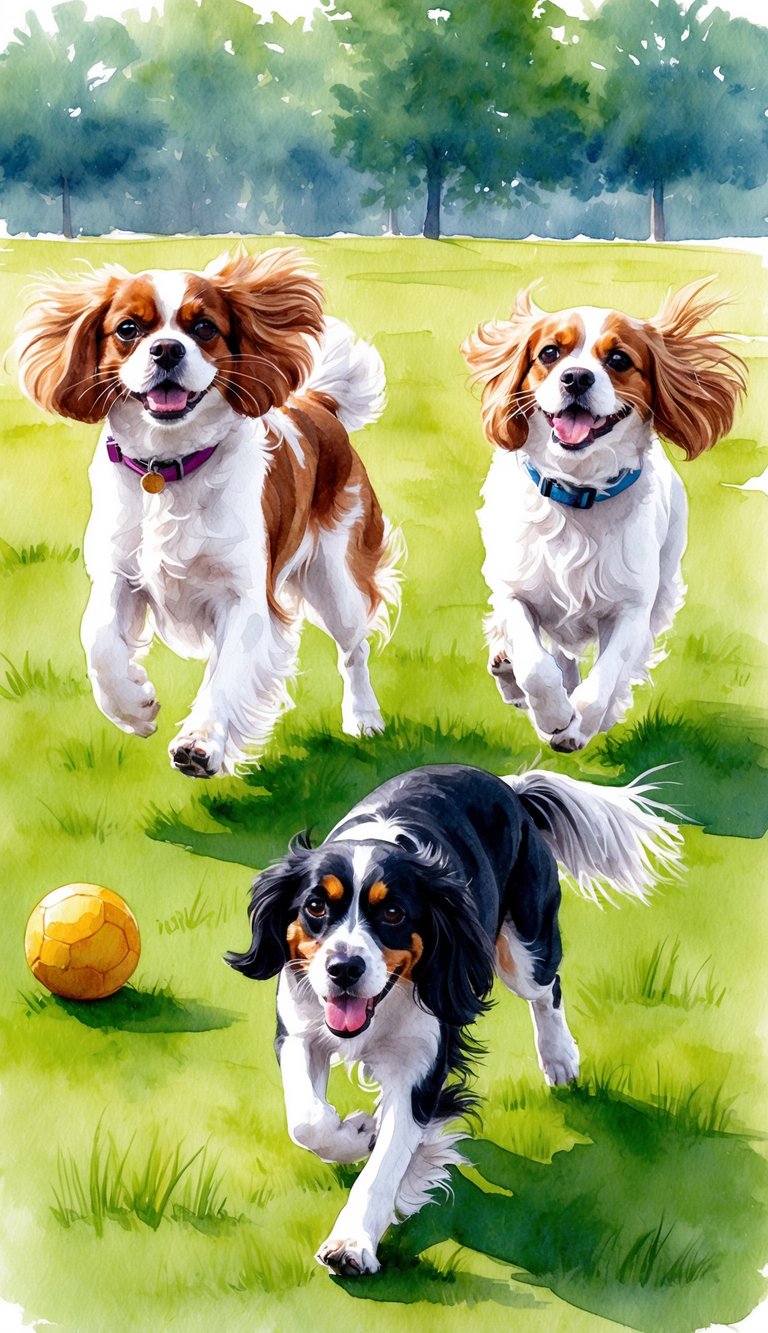
Both the Cavalier King Charles Spaniel and Havanese need regular exercise to stay healthy and happy. Their activity interests and amounts do vary, so knowing what each breed needs will help you plan their daily routine.
Daily Exercise Needs
Your Cavalier King Charles Spaniel needs about 30 to 60 minutes of exercise each day. This can be two walks, some playtime, or a bit of light running.
They like exploring outdoors but shouldn’t be overexerted. Their small size and heart health mean you should keep things moderate.
The Havanese needs similar exercise time but craves more mental stimulation. You can spend 30 to 60 minutes daily walking or playing together.
They’re lively and often want to stay active throughout the day, usually in short bursts. Both breeds do better with gentle, consistent exercise instead of long, intense sessions.
Break activities into short, manageable periods to keep them fresh and safe.
Dog Sports and Activities
Cavaliers often enjoy obedience training and gentle dog sports like rally or therapeutic work. Their friendly nature makes them good companions for less competitive activities.
The Havanese is versatile in dog sports. You can try agility, flyball, or nose work with them.
They tend to excel in activities that challenge their minds and bodies. These sports help prevent boredom and destructive behavior, which is always a plus.
Both breeds respond well to positive reinforcement and structured play. Pick sports and activities that match their energy and personality to keep them engaged.
Trainability and Intelligence
Both the Cavalier King Charles Spaniel and the Havanese are smart dogs that respond well to training. They learn new commands quickly if you use clear and consistent methods.
Their ability to adapt socially matters for how easily they fit into your home and routine. That’s honestly half the battle sometimes.
Obedience and Learning
The Cavalier King Charles Spaniel is eager to please but can get distracted. Short, frequent training sessions work best to keep their attention.
Positive reinforcement—think treats and praise—works wonders. They pick up basic commands well, but you might notice some stubbornness with trickier tasks.
The Havanese tends to be more focused and quicker to learn new tricks. It adapts well to different training styles but responds better to rewards than harsh corrections.
You can train your Havanese in obedience and even agility with consistent practice. Their intelligence makes them good learners, especially when training is fun and engaging.
Socialization
Your Cavalier King Charles Spaniel usually gets along well with other dogs and people if socialized early. They might be shy at first but warm up quickly with gentle exposure.
Early socialization helps reduce anxiety or fear, making their behavior better outside the home. Havanese dogs are naturally sociable and often crave attention from people.
They usually enjoy meeting new dogs and will stay friendly if you start socialization early. Because they adapt well to many environments, proper socialization makes your Havanese confident and well-mannered around strangers and pets.
Compatibility With Other Pets and Children

The Cavalier King Charles Spaniel is gentle and friendly. They usually get along well with children because they’re patient and not too energetic.
If you have other small dogs like a Yorkshire Terrier or Chihuahua, Cavaliers tend to be social and accept them easily. The Havanese is also good with kids, but they may be a bit more playful and lively.
They often enjoy being with other pets such as Dachshunds, Pugs, or small breeds. Like Cavaliers, Havanese dogs can live peacefully with other dogs if introduced properly.
When adding either dog to a home with large breeds like Golden Retrievers or Labrador Retrievers, early socialization is important. Both breeds are generally friendly enough to coexist but need gentle introductions to avoid conflicts.
| Breed | Good With Kids | Good With Small Dogs | Good With Large Dogs |
|---|---|---|---|
| Cavalier King Charles Spaniel | Yes | Yes | Yes |
| Havanese | Yes | Yes | Yes |
You should always supervise interactions between your dog and children. Teaching kids to be gentle and respectful helps maintain a peaceful home.
Both breeds have a calm nature that helps them fit in well with multiple types of pets. Patience and proper training are key.
Breed Popularity and Recognition
Both the Cavalier King Charles Spaniel and the Havanese have strong followings, but their popularity varies in different parts of the world. If you compare them to other small breeds, you’ll get a better sense of their place in the dog market.
Popularity Worldwide
The Cavalier King Charles Spaniel is very popular in the UK and the US. It ranks consistently in the top 30 breeds listed by the American Kennel Club (AKC).
Many Cavalier owners love their gentle nature and elegant appearance. The Havanese is the national dog of Cuba and has grown quickly in popularity in the US.
It often ranks in the AKC’s top 50 breeds. The Havanese stands out for its friendly personality and hypoallergenic coat, which appeals to allergy sufferers.
Comparison to Other Similar Breeds
Compared to breeds like the Bichon Frise, Shih Tzu, Maltese, and Poodle, both the Cavalier and Havanese hold firm positions. The Bichon Frise and Maltese are also popular for their small size and friendly temperaments, but they tend to have curlier or silkier coats.
The Shih Tzu and Havanese share similar Cuban roots, though the Havanese is less common. The Cavalier King Charles Spaniel is often preferred over Poodles if you want a softer, less curly coat but still want a calm companion.
Choosing the Right Breed for You
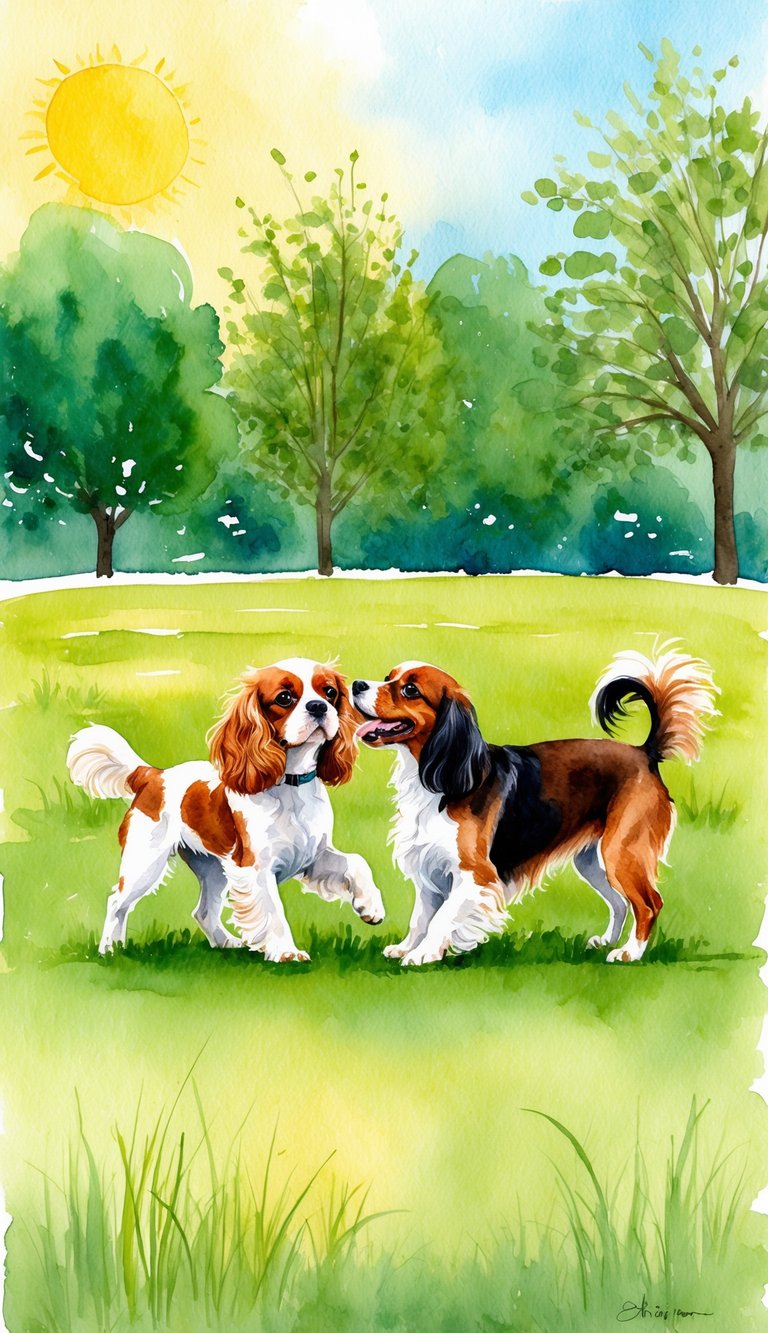
Picking between a Cavalier King Charles Spaniel and a Havanese means thinking about how each dog fits into your daily life. These breeds have different needs and personalities that affect your experience as an owner.
Lifestyle Considerations
The Cavalier King Charles Spaniel needs regular exercise but is also happy to relax indoors. If you have a calm home and enjoy moderate walks, this breed suits you well.
They do best in environments where they get attention and occasional play. The Havanese is more active and playful.
You should expect daily mental and physical stimulation to keep them happy. This breed adapts well to apartments if given enough activity outside.
Both dogs require grooming, but the Havanese needs more frequent care due to its longer, curlier coat. The Cavalier’s coat is easier to maintain.
Owner Experience and Expectations
If you’re a first-time dog owner, the Cavalier King Charles Spaniel is usually easier to train. They’re patient, friendly, and honestly just want to make you happy.
The Havanese tends to be a bit more independent. You’ll need to stick with consistent training to handle their playful side.
Both breeds love being around people. If you’re someone who travels a lot or has a jam-packed schedule, the Cavalier’s chill vibe might just fit your life better.

